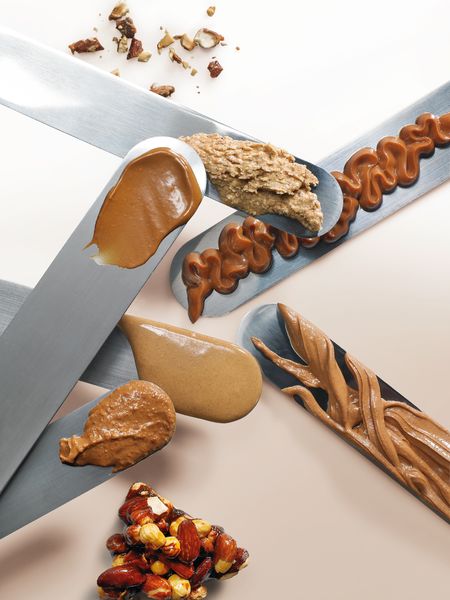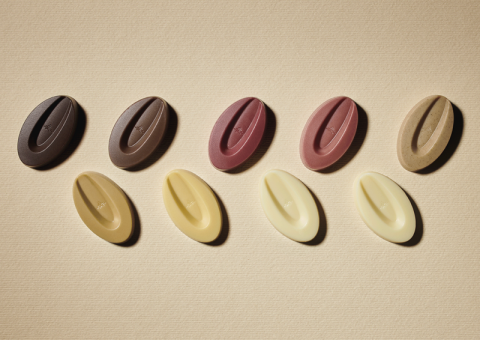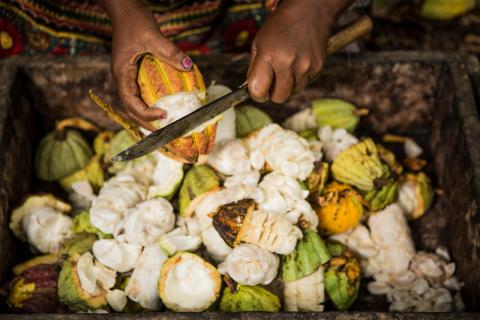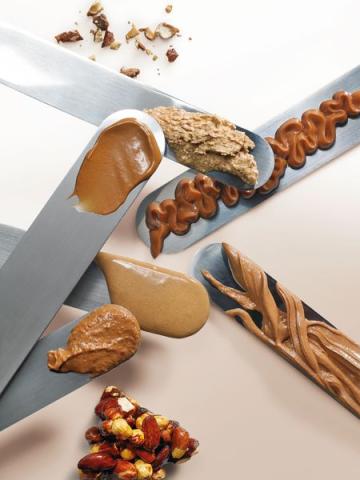
Praliné: Everything You Need to Know About This Sweet Treat Made with Nuts
13 February 2025
What is Praliné?
Praliné is a mixture primarily made from nuts (hazelnuts, almonds, etc.), sugar, and sometimes flavors such as vanilla. Traditionally, it must contain at least 50% nuts to be considered an authentic praliné. The texture of praliné can vary depending on how it's prepared: it can be firm, melting, crunchy, or crispy. This contrast of textures is part of the unique appeal of praliné, which mainly lies in the perfect balance of ingredients and the careful roasting of the nuts.
The preparation of praliné allows for the exploration of various flavors, ranging from a mild, slightly sweet taste to more roasted and caramelized notes. The secret to this treat lies in the mastery of its production process, which transforms simple nuts into a smooth or crunchy paste, depending on the method used.
The Origin of Praliné
The praliné, as we know it today, has its origins in the 17th century. The term "praliné" was first used in its form "prasline" in 1662 before evolving into "praliné" in the 1680s. According to legend, this sweet invention was the result of a meeting between a cook and a nobleman. The creation of praliné is attributed to Clément Lassagne, a cook for the famous César de Choiseul du Plessis-Praslin, ambassador under Louis XIII. The nobleman allegedly watched his cook scrape melted sugar, which inspired the creation of this unique treat, leading to the birth of the "prasline," which would later become praliné.
Though this story is fascinating, it reflects the inventiveness and skill of artisans from that time, who managed to transform simple ingredients into a refined culinary specialty that is still popular today.
Praliné: A Treat with Multiple Uses
Praliné is a highly versatile ingredient that can be used in various forms, such as paste, chunks, or pieces. Praliné paste, in particular, is a flagship product in the world of pastry and confectionery. This paste is ideal for filling crepes, waffles, tarts, or for incorporating into mousses, cakes, or éclairs. Praliné is also one of the key ingredients in the famous Paris-Brest, an iconic pastry created to honor the bicycle race between Paris and Brest.
In addition to pastry, praliné is also widely used in the making of chocolate candies. Praliné can be used to fill chocolates, particularly those with a crunchy shell and a melting filling. Praliné chocolates are a classic in the world of confectionery, whether in milk, dark, or white chocolate. Brands like Valrhona offer a variety of praliné candy recipes that will delight chocolate lovers.
Praliné Manufacturing Methods
Praliné can be made in various ways, but two main methods dominate the production process.
1. The Caramel Method
This technique involves melting sugar to create caramel, to which nuts (almonds, hazelnuts, etc.) are then added. Once the mixture cools and hardens, it is ground to obtain praliné paste. This type of praliné is often called "fruity praliné" due to the caramelization process, which imparts a sweeter and slightly toasted flavor to the nuts.

2 . The Traditional (Old-fashioned) Method
In this more artisanal version, the nuts are first roasted before being mixed with sugar. Unlike the first method, there is no caramelization here. The mixture is ground to produce a soft and creamy paste. This type of praliné is generally sweeter and less sugary, allowing the natural flavor of the nuts to shine through.

When discussing exceptional praliné, it's hard not to mention Valrhona, a brand renowned worldwide for the quality of its chocolate products and praliné. Valrhona stands out for its high-quality artisanal manufacturing and rigorous selection of raw materials. Each Valrhona praliné is the result of meticulous craftsmanship, with carefully chosen nuts (Italian hazelnuts, Spanish almonds) for their exceptional taste.
The process of making Valrhona praliné has remained practically unchanged for over 90 years. In the brand's workshops in Tain l'Hermitage, France, the nuts are first mixed with sugar in a large cauldron. This traditional technique, called "sablage," results in a perfect texture and intense flavors. Then, a caramel is prepared separately, and the sugar-nut mixture is cooked in copper cauldrons. After cooling, the praliné is finely ground to create a smooth and homogeneous paste.
Valrhona’s praliné range is also impressive, with products ranging from classic pralinés to more original creations, such as pistachio or peanut praliné. Creations like the rinette, a hazelnut praliné covered in milk chocolate, or the succès, an almond and hazelnut praliné covered in milk chocolate, are true delights. You can also find two types of praliné in stores or on the Valrhona Collection website: the Smooth Almond and Hazelnut Fruity 50% Praliné or the Crunchy Almond and Hazelnut 50% Praliné.

Creative Applications of Praliné in Pastry
In pastry, praliné offers numerous creative possibilities. It is perfect for flavoring ganaches, creams, or mousses, and can also be used to make melting hearts or crunchy pieces to incorporate into desserts. For example, praliné is the key ingredient in the Paris-Brest, a pastry shaped like a bicycle wheel, filled with praliné cream. Praliné can also be used to enhance éclairs, entremets, tarts, and chocolate mousses.
Praliné, whether crunchy, melting, or smooth, offers an incomparable sensory experience. The combination of nuts and sugar creates a unique texture and flavor that has been delighting sweet-tooth enthusiasts for centuries. From traditional manufacturing methods to modern creations, praliné is an essential ingredient for anyone wanting to explore subtle and refined flavors. If you're a fan of sweet treats, don't hesitate to explore the many varieties of praliné, including those offered by brands like Valrhona, which continue to perfect the art of praliné in an exceptional way. Praliné is not just a sweet treat; it’s a true culinary experience that brings back memories and evokes emotions. Whether you are a pastry chef or simply a chocolate lover, let yourself be tempted by this timeless sweetness that continues to captivate the tastebuds of those who love good food.




